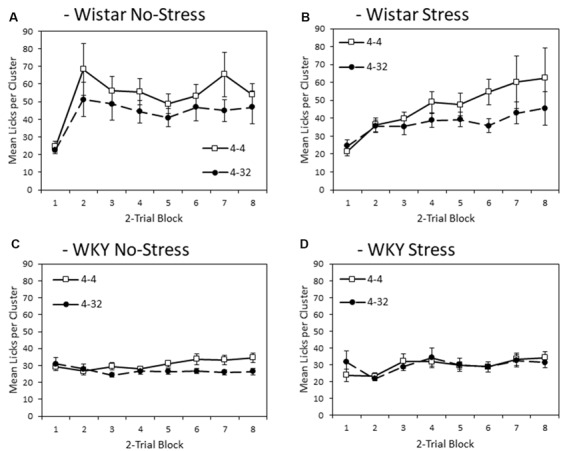Figure 3.

Anticipatory contrast in mean lick cluster size (LCS: ±SEM) of the initially presented 4% sucrose solution as a function of whether it was followed by either 4% sucrose (open symbols) or 32% sucrose (filled symbols), separated by strain (Wistar: Panels A,B; WKY: Panels C,D) and stress groups (No-Stress: Panels A,C; Stress: Panels B,D). The data presented is averaged over two-day blocks. The solution was available for 3 min per day. WKY rats displayed a significantly lower mean lick cluster size than Wistar rats, but there was no effect of stress or stress × strain interaction. Critically, there was an anticipatory contrast effect (lick cluster size, indicating hedonic responses, for 4% sucrose was significantly lower when followed by 32% sucrose than 4% sucrose) and this effect was significantly reduced in WKY compared to Wistar rats (see “First Solution Lick Cluster Size—Anticipatory Contrast” section for details). Differential lick cluster sizes for the 4% solution depending on the subsequent concentration of sucrose solution offers a potential measure of anticipatory anhedonia.
